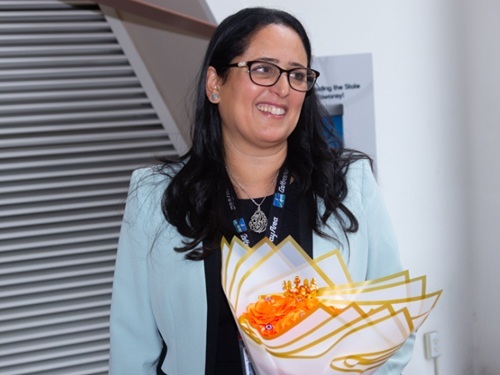As part of its ongoing work to explore sustainable transportation options, the Pennsylvania Department of Transportation is seeking public feedback for its PennDOT Pathways Program, which is searching for ways to close an $8.1 billion gap in annual highway and bridge transportation funding to keep the state’s mobility network in good repair.
[Above photo by PennDOT.]
The agency said it is accepting public comments on the program through December 17.
The department noted that federal funding has remained essentially flat for several years despite rising inflation, while motor fuel taxes – which comprise 74 percent of PennDOT’s funding – have become “increasingly unreliable.”

“A safe and reliable transportation network is critical to quality of life for those who travel throughout our state,” explained Yassmin Gramian, PennDOT’s secretary, in a statement. “We take our responsibility as stewards of mobility very seriously, which is why we must explore our options.”
The agency recently made an appeal to Pennsylvania legislature for permission to borrow $600 million to prevent a shutdown of current road and bridge projects – money needed due to severe transportation revenue falloffs caused by the COVID-19 pandemic.
Instead, the state legislature and Governor Tom Wolf (D) hammered out an agreement to fund ongoing road and bridge projects through February 2021 as they work to craft a longer-term fiscal solution for PennDOT.

In May, PennDOT’s Gramian noted in a news story that COVID-19 stay-at-home orders halted driver’s license renewals and triggered a dramatic reduction in travel and a corresponding loss of motor fuel tax revenue that left the state a nearly $1 billion hole in its transportation budget.
Hard-hit line items included an estimated $800 million loss of revenue for construction and maintenance, a $100 million reduction in funds for multimodal projects and a $90 million reduction in liquid fuels revenue for local governments.
That is why, through its PennDOT Pathways program, the department is examining “near- and long-term funding solutions” and how they might work in Pennsylvania.
As part of this program, the agency recently launched an alternative funding Planning and Environmental Linkages or PEL study as part of the PennDOT Pathways program to explore options for funding the maintenance and improvement of Pennsylvania’s highways and bridges.
Along those lines, in mid-November, Pennsylvania’s Public Private Transportation Partnership or P3 Board approved a new transportation initiative that will help accelerate the reconstruction and rehabilitation of major bridges in partnership with the private sector.
Through this new Major Bridge P3 program, PennDOT can accelerate critical work on major bridges across the state through the consideration of user fees, the agency said in a statement.
The program will allow for the delivery of these major bridges through the appropriate contracting P3 delivery model for each project or package of projects, and will help PennDOT achieve the following goals:
- Accelerate the renewal of major bridges to ensure public safety.
- Avoid time and financial impacts of travel diversion resulting from bridge restrictions and closures due to bridge condition.
- Help offset motor fuel tax revenue losses as identified by the state Transportation Advisory Committee.
- Ensure users (including out-of-state traffic) contribute fairly to the replacement or rehabilitation of the bridges based on usage.
- Create a sustainable funding model for the state’s major bridges.
PennDOT said it will consider the P3 delivery model for major bridges and apply it in a geographically balanced manner statewide – adding that that by using a P3 delivery method, it can leverage private-sector innovation to address complex projects and to help ensure the longevity of infrastructure investments.
 States
States
Dina El-Tawansy Appointed Director of Caltrans
July 11, 2025 States
States

